Sea Turtle Facts For Kids
Written by Sthitee Mohanty, senior writer.
Turtles is an umbrella term – which includes both sea and freshwater turtles. But there is a difference between the two.
Written by Sthitee Mohanty, senior writer.
Looking for great Sea Turtle facts for kids? You’ve come to the right place! We tell you all about sea turtle facts, including facts about green sea turtles and a lot more!
If you’ve seen the Disney movie Finding Nemo, then you’ll know that it had a character named Crush – which was a 150-year old sea turtle (he was one cool guy!). Did you know that Crush the turtle was based on a green sea turtle?!
Let’s go to read interesting facts about sea turtles you need to know, including facts about different types of sea turtles!
First, let’s understand that “turtles” is an umbrella term – which includes both sea and freshwater turtles. But there is a difference between the two. We’ll get to that a little later.
Now on to all other sea turtle facts – including sea turtle habitat and all else you need to know!
What are sea turtles?

Sea turtles are cold blooded reptiles that inhabit the waters of the tropical and subtropical regions (the tropical regions roughly lie between the Tropic of Cancer and Tropic of Capricorn region).
Sea turtles have hard shells and flippers to make life easier in seawater. Most female sea turtles return to land to lay their eggs. So all sea turtles start life on land as tiny little sea turtle hatchlings!
They have long lifespans. The species has been around since the time of the dinosaurs – more than 100 million years ago.
If you wondering – what is the sea turtle’s scientific name, then here it is. It is Superfamily Chelonioidea,. They are also known as marine turtles.
Here’s an interesting fact about sea turtles – though they spend most of their life in water, they cannot breathe in water. They are breathing creatures that come up to the surface for oxygen. The interesting thing is that they can hold their breath for long periods of time under water- from 4 -7 hours. When they do this, their heart rate slows in order to conserve oxygen and they rest.
How do sea turtles adapt to life at sea?

- A flat and streamlined low-weight shell makes movements easier in the water
- Long paddle-like flippers make swimming easy
- They ‘cry’ salt tears – they have glands near their eyes that excrete out salt water to manage the excess salinity of their habitat
- They can slow down their heart rate underwater to conserve oxygen
The Pokemon character Squirtle is based on sea turtles – did you know this fun fact about sea turtles?
How is a sea turtle different from a freshwater turtle?
All turtles – be it sea or freshwater, are reptiles and are cold-blooded, and their females produce eggs.
However, there are differences between the two – apart from the fact that one lives in deeper water and the other lives in rivers and ponds
| Sea Turtle | Freshwater Turtle |
| Have long flippers | Have webbed feet |
| Cannot pull back body and limbs into shell | Can pull back body and limbs into shell |
| Spend time on land only for nesting | Spend comparatively more time on land, for nesting, feeding, etc |
| Spend time in seas and oceans | Are also known as terrapins. Mostly found in rivers, ponds, and lakes. |
| Larger in size | Smaller in size |
Also, turtles are different from tortoises – the latter live on land and have some difference in physical characteristics.
Types of sea turtles

There are seven types of sea turtles – seven species that is, that have been discovered till now.
These are…
1. The Olive Ridley Turtle (Lepidochelys olivacea)
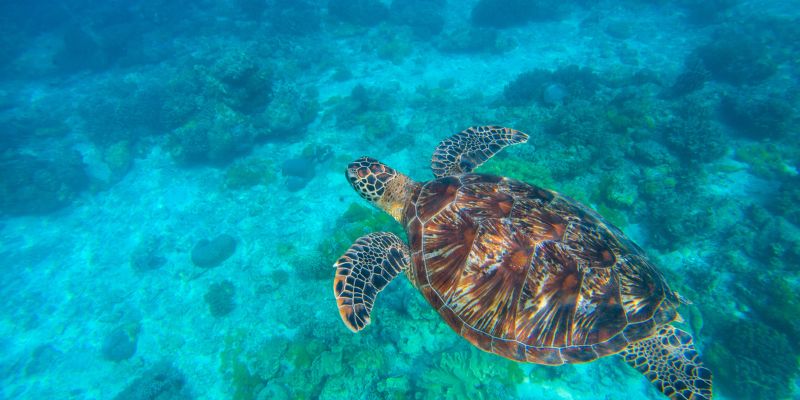
2. The Kemp’s Ridley Turtle (Lepidochelys kempii)
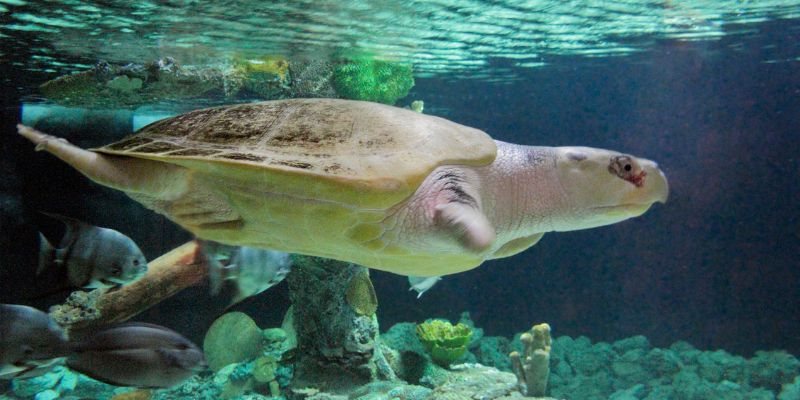
3. The Leatherback Turtle (Dermochelys coriacea)
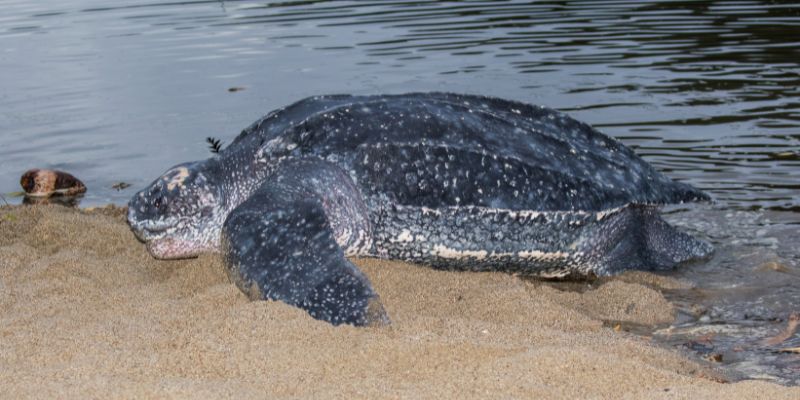
4. The Hawksbill Turtle (Eretmochelys imbricata)
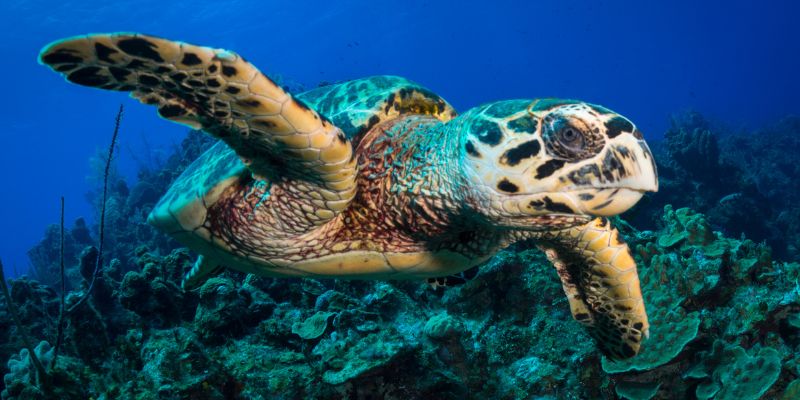
5. The Loggerhead Turtle (Caretta caretta)
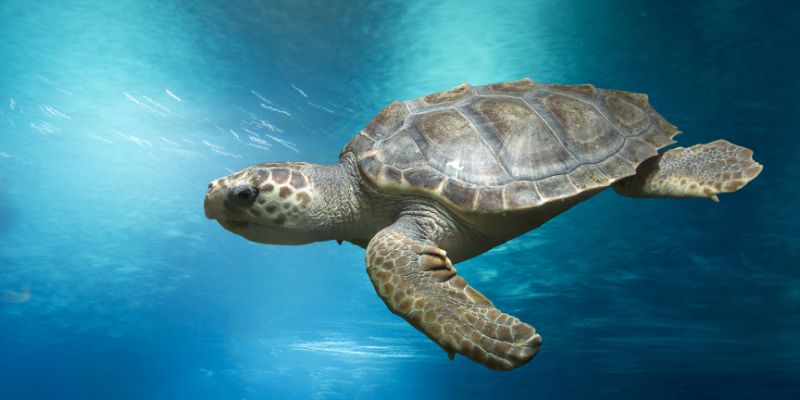
6. The Green Turtle (Chelonia mydas)
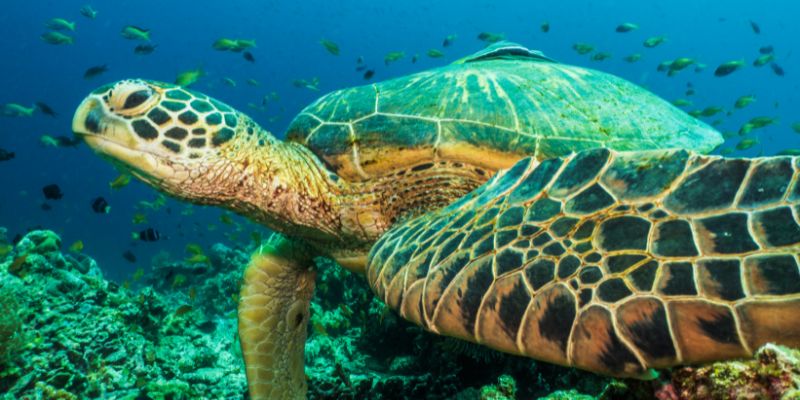
7. The Australian Flatback (Natator depressa) Turtle
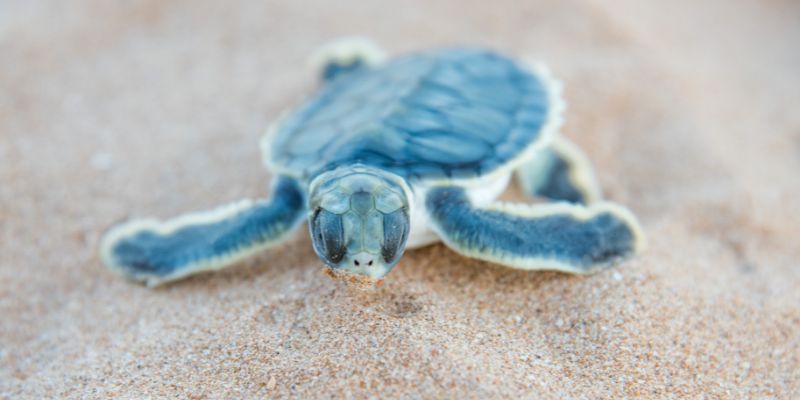
All these species are hard-shelled other than the leatherback that has a soft, leathery shell.
Here’s a quick look at the characteristics of the different types of sea turtles
| Name | Sea Turtle Habitat | Main Nesting Sites | Special Features |
| Green Turtle | Pacific, Indian, Atlantic Oceans | Costa Rica Coast, Raine Island, Australia | Only sea turtle species that basks on land. Also, biggest of sea turtles and are herbivores |
| Olive Ridley | Pacific, Indian, South Atlantic Oceans | Odisha, India Gabon, Africa | They get their name from their olive colored heart shaped shells |
| Kemp’s Ridley | Gulf of Mexico, Atlantic Ocean | Tamaulipas, Mexico | Smallest sea turtle among the seven |
| Loggerhead | Pacific, Atlantic, Indian Oceans | Florida, U.S.A., Oman | Their strong jaws allow them to feed on hard shelled prey like molluscs |
| Hawksbill | Indo Pacific, Atlantic Oceans | Australia, Solomon Islands | The beak of the hawksbill turtle resembles the beak of a hawk |
| Leatherback | Pacific, Atlantic, Indian Oceans | Trinidad and Tobago, West Indies Gabon, Africa | The leather-like shell is unique to leatherbacks – other turtles scaled, hard shells |
| Australian flatback | Western Indo Pacific Ocean | Australia | The shells of flatbacks lack the distinctive curved shape most turtles have – their flattened shells are where they get their name from |
Fun facts about the green sea turtles
They are the biggest hard-shelled sea turtles.
They are herbivores, and mostly eat seagrasses and algae.
Green turtles can be found all over the world.
They get their greenish color from their vegetarian diet.
We carry on with the list of amazing sea turtle facts…
Where are sea turtles found?

Sea, or marine turtles live in most of the world’s oceans, apart from cold ones, like the polar seas.
They typically stay in shallow continental shelf waters.
What do sea turtles eat?

Different species of sea turtles eat different things. Mostly, they are carnivorous, meaning that they eat other animals, except for the green sea turtle.
Some sea turtles are omnivorous as hatchlings but become herbivorous/ carnivorous as an adult, depending on their species.
Here’s a quick look at what sea turtles eat
Leatherback turtles largely eat invertebrates like jellyfish and sea squirts.
Green sea turtles are herbivores that eat seagrass and algae. Their hatchlings, however, are omnivorous, meaning that they eat both plants and animals.
Adult Loggerhead turtles are carnivores that mostly eat crabs and whelks. Their hatchlings, like the green sea turtles are omnivores.
Hawksbill turtles eat sea sponges (they are fussy eaters!)
Flatback turtles are carnivores that eat seaweed, crabs and shrimps.
Kemp’s ridley turtles are carnivores that love crab.
Olive ridley turtles are omnivorous species that eat jelly fish, other fish, other small sea animals and also plants.
Here’s something interesting about the eating habits of sea turtles. The diets of sea turtles has a lot to do with the health and food chain in our oceans. They control prey populations by feeding on them. They graze and keep a check on the ocean-floor plant growth.
Here are some examples
Hawksbill turtles feed on sea sponges. This is important because if not checked, sea sponges would take over and stop the thriving of reef-building corals. So, by eating them, turtles do a lot in protecting the coral reefs, which, in turn, are important for the survival of many other sea creatures.
Similarly, the leatherback turtle mainly eats jellyfish, which helps in stopping the latter from eating other fish stocks – this is beneficial for the other animals in the food chain.
Sea turtles, thus, are an important part of the marine ecosystem.
Are sea turtles endangered?
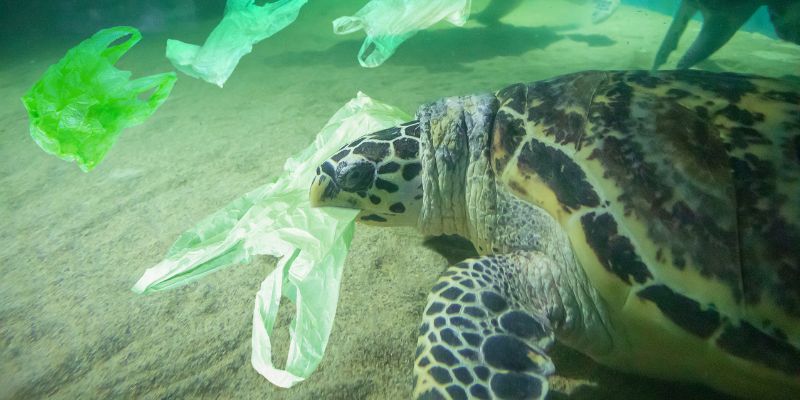
If your question is – are sea turtles endangered? Then the answer is yes. Unfortunately, six of these seven species are listed as vulnerable to extinction or critically endangered on the IUCN Red List.
What dangers do sea turtles face today?
Today, sea turtle shells are in high demand for their supposed medicinal properties. Even hair ornaments and other decorative items are made from their shells. This has led to higher poaching of sea turtles.
Here’s a look at the reasons why sea turtles are endangered today
- Climate Change – increased global temperatures may result in the sea turtle population being heavily dominated by female sea turtles. This would cause problems in reproduction.
- Poaching – these sea turtles are poached for their skin, meat, shell, etc.
- Coastal development – an increasing number of beach resorts and other land developments on the coast is a threat to sea turtle nesting sites.
- Bycatch – sea turtles are often trapped in commercial fishing nets. They struggle to swim and drown to death in such cases.
- Marine pollution – oil spills, plastic littering have greatly reduced the sea turtle populations.
How old is the oldest sea turtle?
It’s hard to determine the age of a turtle and establish which one is the oldest turtle alive, some cheloniologists (as people who study turtles are called) have tried finding out.

Image Credit: Kevstan via Wikimedia Commons
The oldest and longest-living turtle according to the Guinness Book of World Records is one names Jonathan, who is 190 years old and is still alive! He is, the oldest living chelonian – a category of species that includes turtles, terrapins and tortoises.
Jonathan is said to have been born around 1832. He lives in St. Helena om the Seychelles – an archipelago of 115 islands in the Indian Ocean, off East Africa
Interesting sea turtle facts for kids

Here are 20 facts about sea turtles for you to know 🙂
1. They can’t hide in their shells
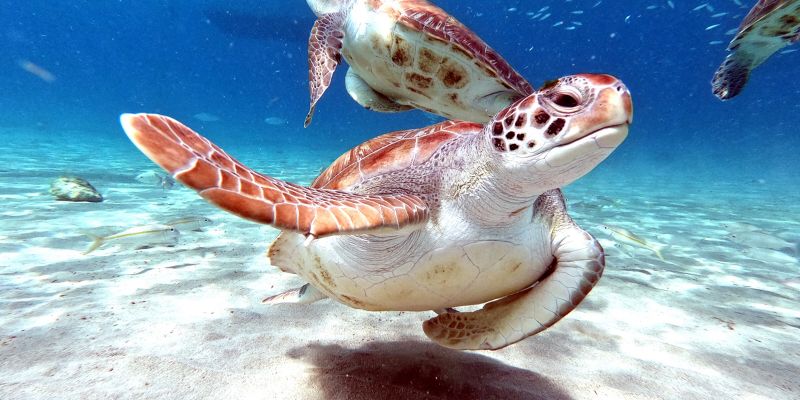
Unlike freshwater turtles, sea turtles cannot retract into their shells! Since their shells are flat, there is not enough space for sea turtles to pull their heads and limbs back into their shells.
2. The largest sea turtle found alive was a leatherback!

The female sea turtle caught by fishermen in the Philippines weighed almost 500 kilograms. Leatherbacks are the largest among these sea turtles while loggerheads are the largest hard-shelled ones!
3. Much like human skin, the sea turtle shell is also made up of keratin!

The shells of sea turtles have two parts: the upper part is called the carapace (that’s right, it’s the hard dome that protects them from above); the lower part is called the plastron.
4. Green sea turtles are green because of their plant-based diet!
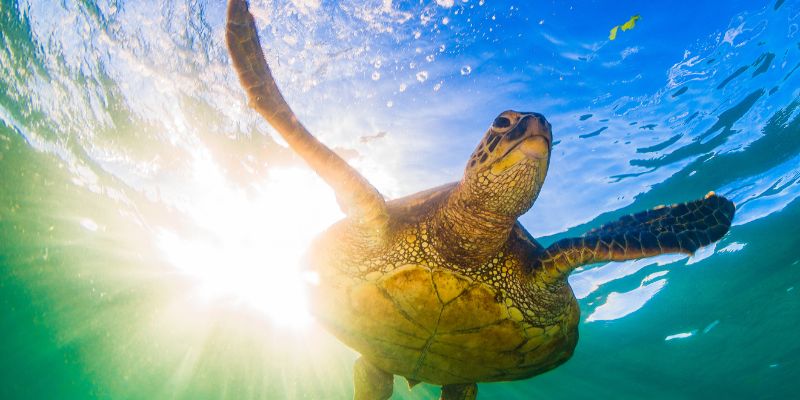
The seagrass and algae they eat make their body look green – the shell remains brown.
5. They don’t have teeth

Did you know that sea turtles don’t have teeth? They use a ‘beak while eating – the hook-like beak makes it easier for them to grasp and chew on their food. The beak is made of keratin – just like human hair!
6. Some can live in cold water
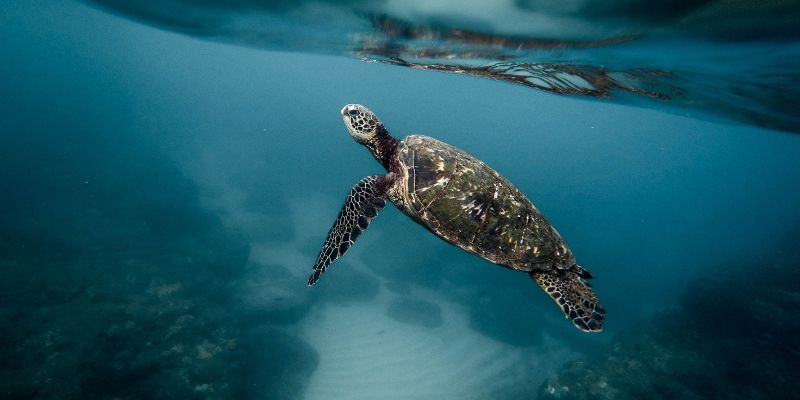
While most sea turtles are deeply sensitive to the cold, leatherback turtles can live in cold water! Their large body size, thick internal fat layer, and changing swimming habits allow them to survive in such conditions.
7. They lay eggs on land
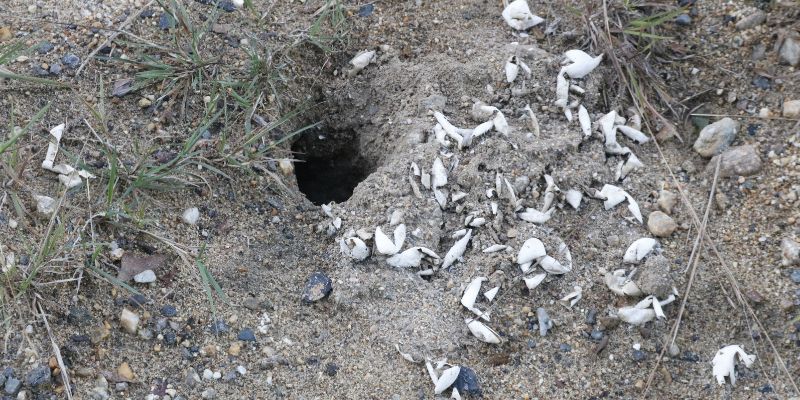
Nesting female sea turtles return to the coast, dig up sand, lay their eggs, form a nest, and return to the ocean. They do all of this with only their flippers! They can lay up to 100 eggs, which incubate in the sand for about 60 days.
8. Sea turtles can make a wide range of noises – from clicks to hisses.

Yet female sea turtles can produce special sounds during nesting. They produce human-like belches and burps!
9. Mass sea turtle nesting events are called Arribadas
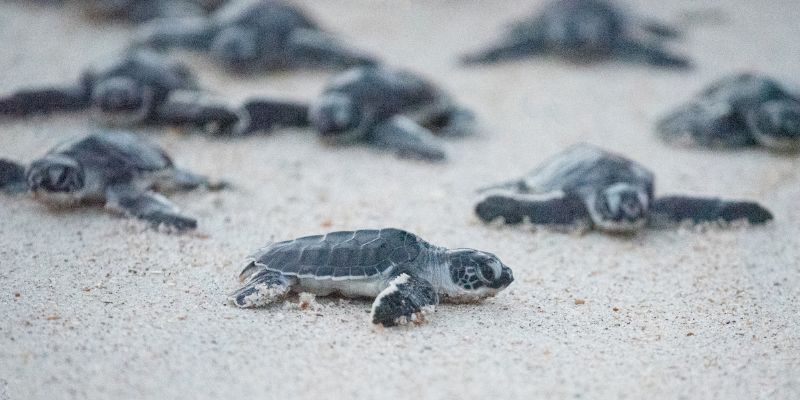
In Spanish, it means – “arrival by sea”.
10. The sand temperature determines the gender of the baby sea turtles!
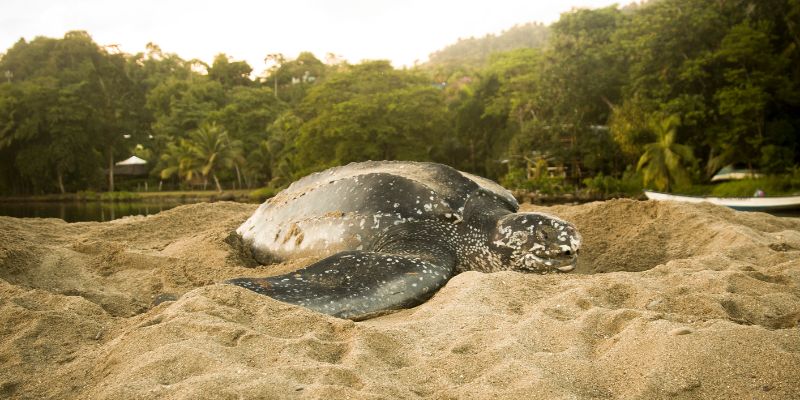
This is one of those amazing sea turtle facts that you’d love to know! The momma turtle lays eggs in the sand – and it the temperature of the sand is cool, there are more males. Warmer sand produces more females.
11. The female sea turtles nest at night.

This helps protect the eggs from day predators. There is also no sun so the eggs are not overheated. Only the Kemp’s ridley sea turtle nests during the day.
12. Sea turtle hatchlings run into the ocean once the eggs hatch

It’s nature’s way of protecting the young. After hatching, the little turtles run all together towards the ocean. This helps them stay safe from predators. Once they get here, they hide till they are bigger.
But, here’s the sad truth – very few hatchlings survive their first year of life. They get eaten by predators like crabs, birds and even dogs as they try to get from their nests on land to the sea. And even when they reach the water, many fish feed on the young turtles!
13. Most female sea turtles return to their birthplace to lay eggs.
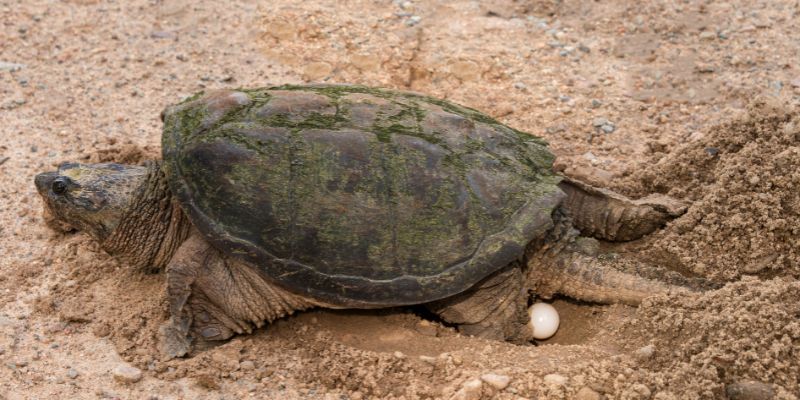
That is how famous sea turtle nesting sites remain the same!
14. Sea turtles are expert deep sea divers.
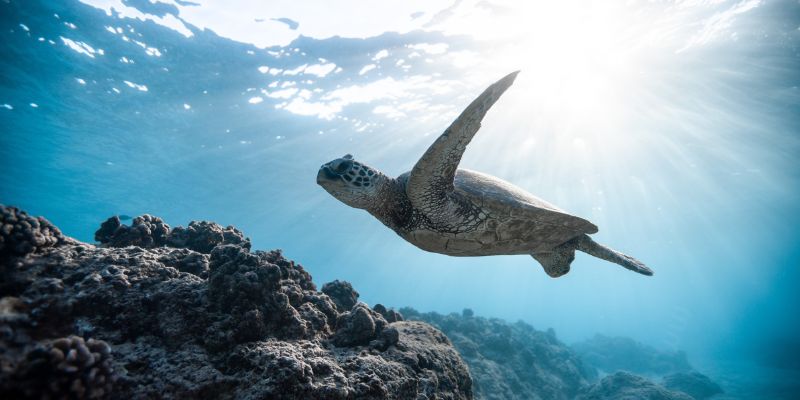
They don’t breathe under water and can hold their breath for almost seven hours!
15. Green sea turtles are the only herbivorous sea turtles!
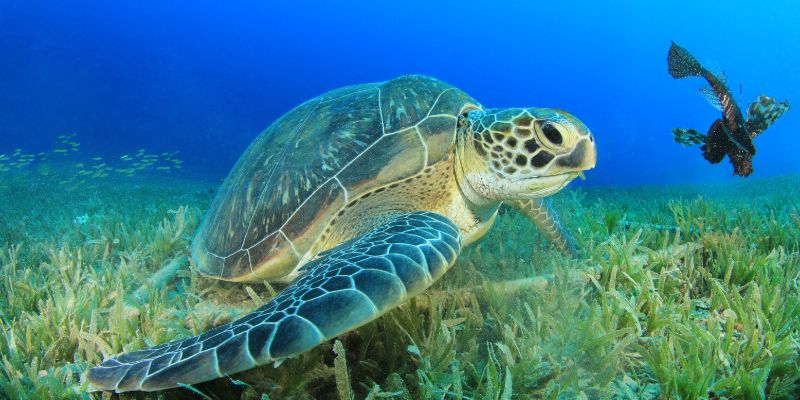
They eat mostly plants, while other sea turtle are carnivores or omnivores
16. Sea turtles use ocean currents to travel the ocean more efficiently.
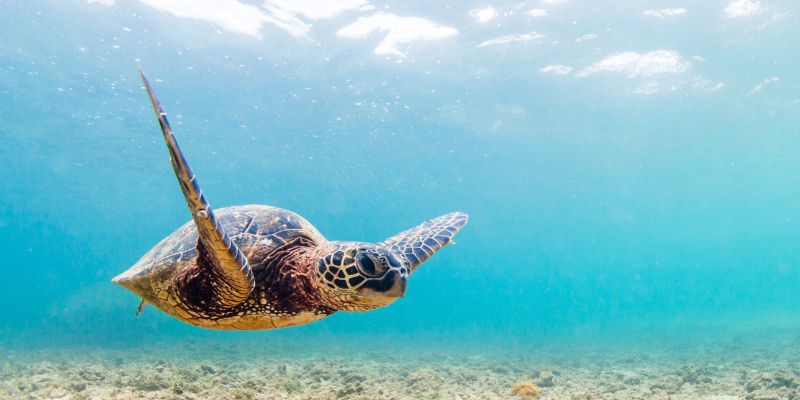
The currents make their movements smoother, resulting in lesser use of energy.
17. Sea turtles can see in colour

Much like , sea turtles can see in colour. However, not enough research has been done to determine the degree of color visibility they have.
18. Population boom
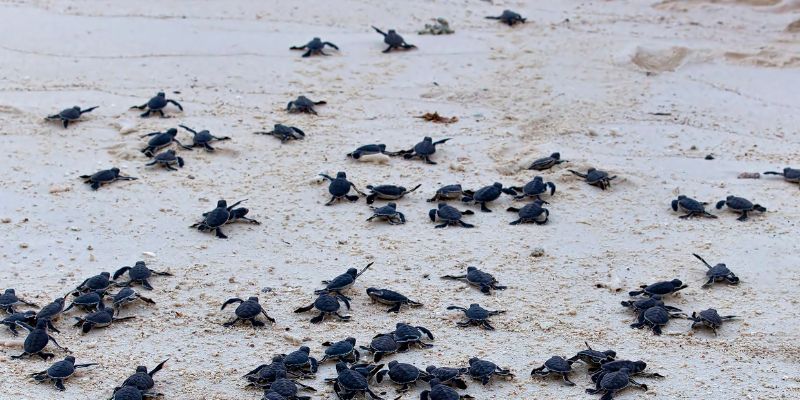
Sea-side human activity almost came to a stop during pandemic lockdowns – and this resulted in a greater number of nesting sites for sea turtles from Florida to Thailand! This may have resulted in a population boom for all sea turtles, though such data has not been recorded till now.
19. Their “lost years” are a mystery
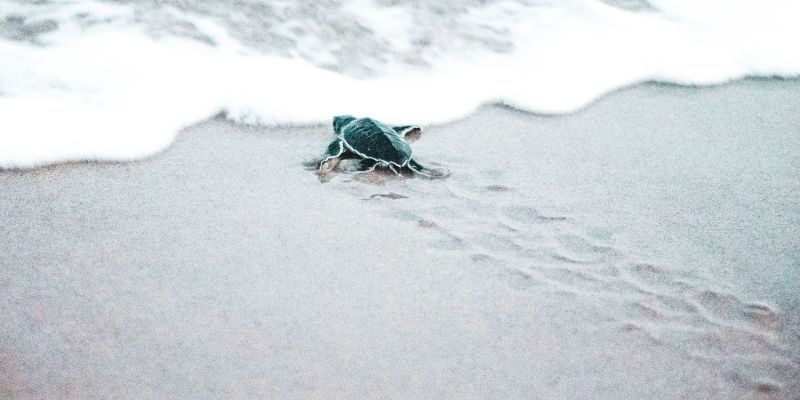
The first few years after sea turtles hatch are called the ‘lost years’. This is because from the time they hatch to the time they show up in the shallow waters is hard to establish and study. Some cheloniologists believe that these lost years that they spend at sea can be up to 20 years!
20. Baby turtles are called hatchlings.

A group of hatchlings is called a clutch. Also, do you know that only about
1 in 1,000 sea turtle hatchlings reach adulthood. This is because it takes them a long time to grow and reach maturity, and in the meantime they face many dangers faced – mainly from predators, but now also due to marine plastics 🙁
How many of the above 20 facts about see turtles did you know?
Where are sea turtles found in India?
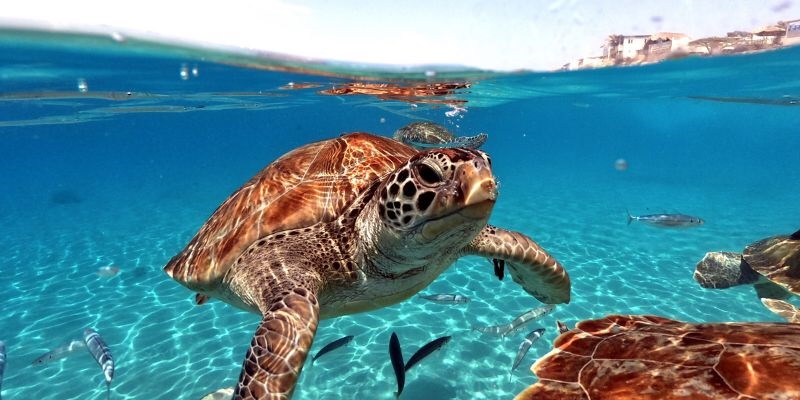
The Indian subcontinent has a coastline roughly 8000 kilometers long. Five of the seven sea turtle species are found around this coast in the Indian Ocean. Some species even return to nesting sites in India.
The olive ridley sea turtles and the leatherback sea turtles have confirmed nesting sites in India.
What is a nesting site?

A physical site for egg-laying is known as a nesting site.
The nesting sites of sea turtles have three special features – they are accessible on all sides by the ocean; the sand should be loose to make digging easier; the sites should be at a high altitude so as to avoid getting submerged during high tide.
A nesting site is said to be active when the sea turtles regularly visit that stretch of the coast to lay eggs.
Did you know that India hosts the world’s largest mass nesting site for sea turtles?
The Gahirmatha olive ridley nesting site in Odisha is considered one of the largest mass nesting rookeries in the world.
Adult sea turtles are found either in shallow waters or open oceans, depending on the species.
These sea turtles have unusual life cycles – the females migrate to land only when they have to nest – lay eggs. Otherwise, most adult sea turtles forage in open water, living out their entire lives in the ocean.
Types of the sea turtles in India
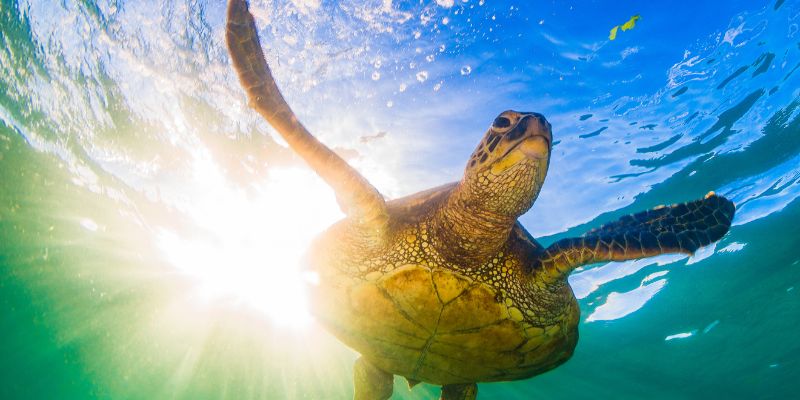
There are seven types of sea turtles the world over, yet sufficient data has been collected on only six of them.
Out of these seven, five sea turtle species are found in waters surrounding the Indian subcontinent – the loggerhead, olive ridley, green, leatherback, and hawksbill sea turtles.
Among these five sea turtle species, four species nest on the Indian coast. The loggerhead turtle nests in Oman, etc.
The olive ridley sea turtles nest on the Indian coast along the Bay of Bengal – the largest nesting site is found along the coast of Odisha. Three major olive ridley nesting sites are found in Odisha – Gahirmatha, Devi river, and Rushikulya.
The leatherback sea turtles nest in the Andaman and Nicobar Islands in India.
The green sea turtles nest in the Lakshadweep islands. Recently, their nesting sites have been found on the Maharashtra coast.
The hawksbill sea turtle nests are found in the Lakshadweep islands.
Threat to the sea turtle in India
India’s growing population threatens the sea turtles.
Rising tourism is leading to increased beach developments. Illegal fishing results in sea turtle entangling and strangulation in plastic fishing nets. Even the eggs of these sea turtles are getting poached.
This majestic oceanic reptile needs to be protected. Organizations like the Turtle Action Group, the Turtle Survival Alliance, and others are working very hard to protect sea turtles in India.
Mysteries of the ocean
Many marine biologists still call sea turtles mysteries of the ocean. Though much research has been done on these reptiles, many aspects remain unexplored. Hope you liked these Sea Turtle facts for kids.
Let us know if you have come across more fun facts about sea turtles!

Better Your Child’s G.K. In 3 Minutes – Get This Free Newsletter
Get fun facts, simple and easy news, quizzes, and lots of other interesting things to read in your mailbox – for free! It’s what we call GK-on-the-go!
I Kid You Not now has a large readership across India and also parts of the world. If you want to write for us, you can submit your story here. You can also apply to become a news anchor. Apply here



Comments